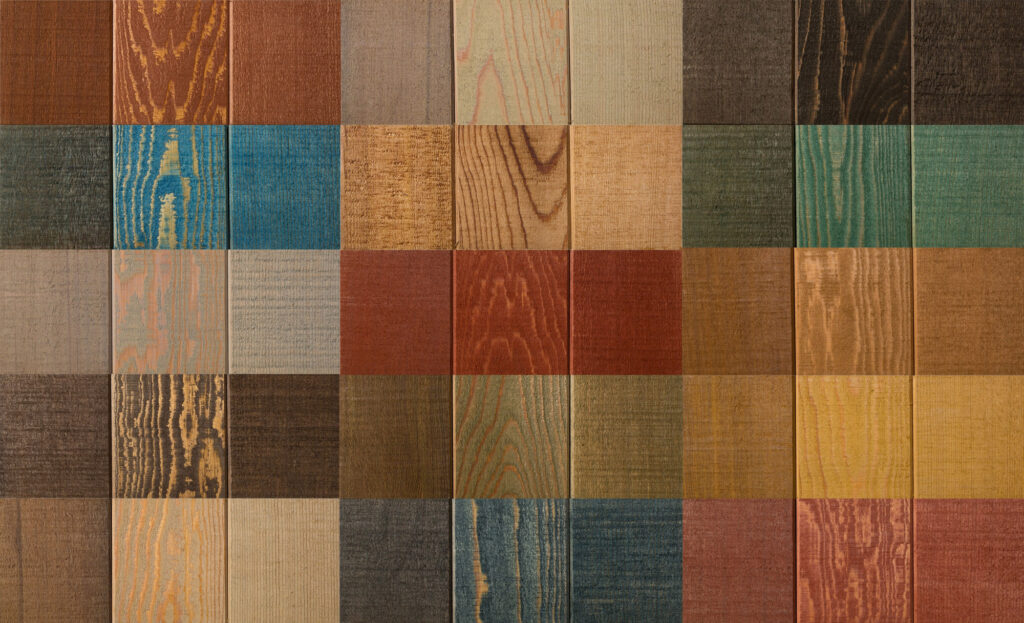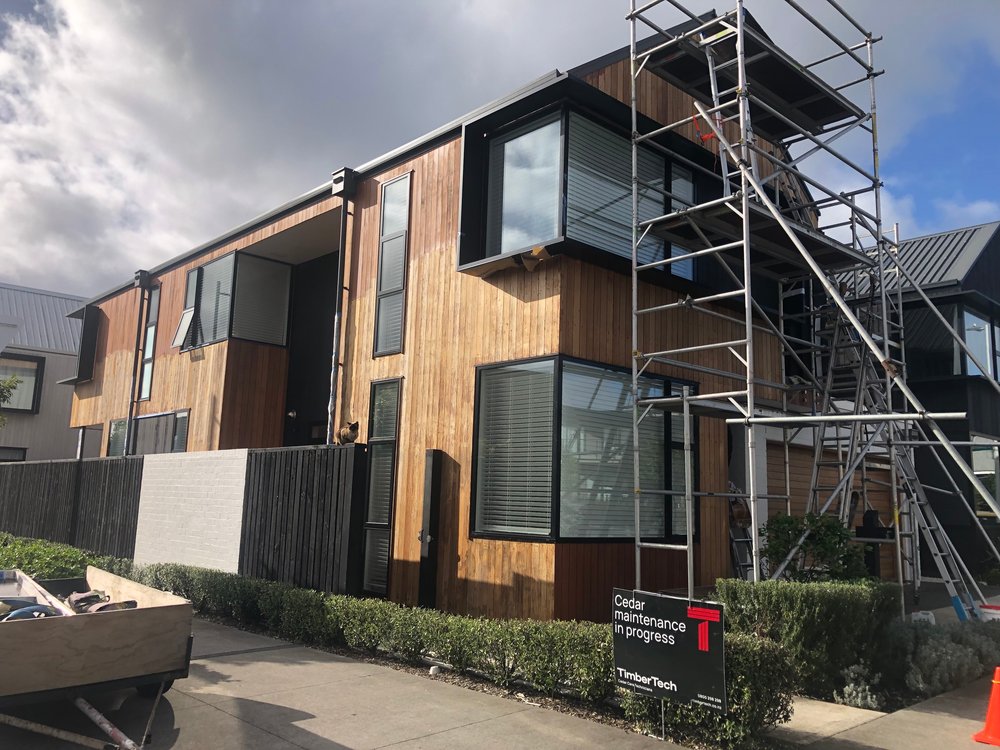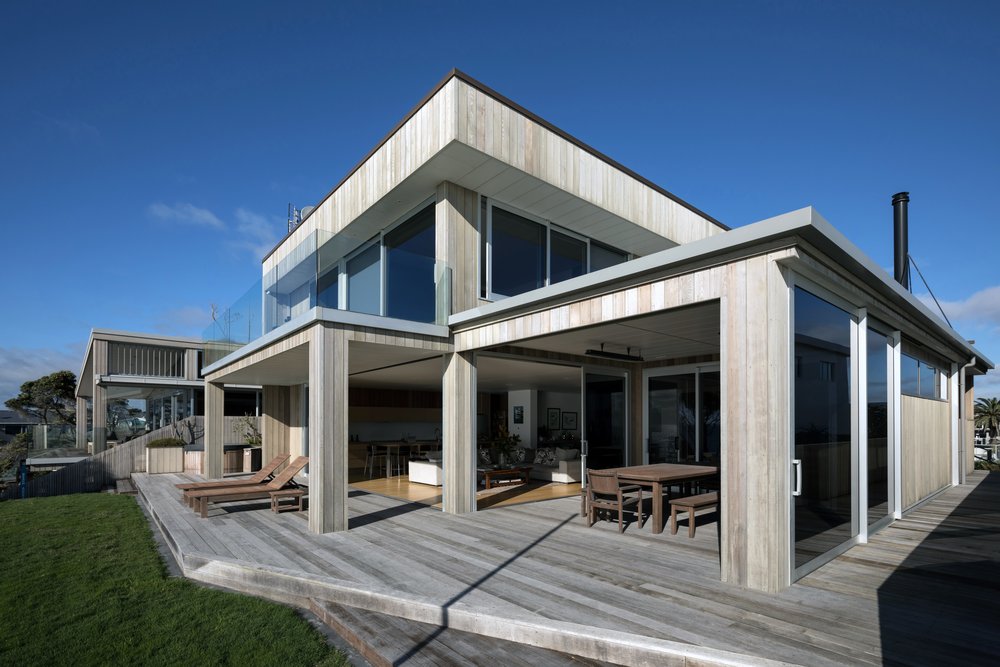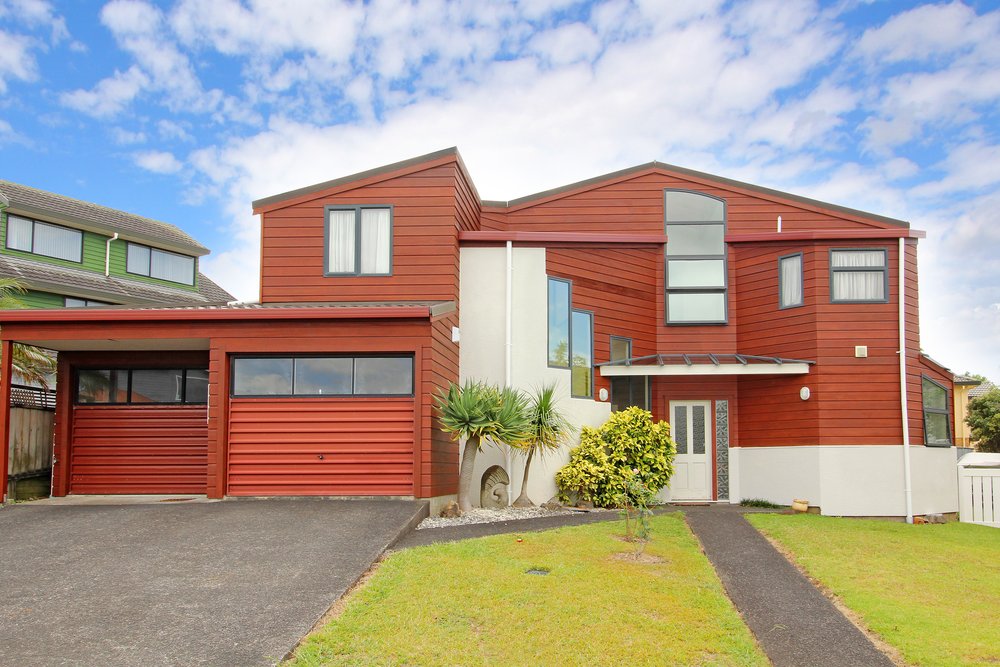Most Cedar homeowner aren’t aware that they can change the colour of their Cedar. It usually comes about in our initial conversation with new customers who have just bought their home and want a more contemporary look.
Many Cedar homes that were built before the 2000s have a distinctive red colour than now looks dated.
At the time, the red/brown tint was all that was available, but now we have access to a wide range of tinted oils and stains.
What colours we recommend depends on the unique circumstances of each house: the existing colour of the Cedar, levels of UV exposure, whether the Cedar is treated with an oil or a stain, and when the Cedar was last maintained.
Before talking colours, it’s useful to understand how Cedar works in relation to oils and stains.
How Cedar Works
Raw Cedar can be a myriad of colours, anything from light pine to mahogany red.
There is a lot of red Cedar around. If you cut it in half, the inside is a deep red colour. Add oil to that and the red pops out, making it a difficult base colour to compete with. But more on that later.
Once the Cedar has been used in construction, an oil or stain is applied to protect it from the elements and give a cosmetic finish.
A tint is a pigment added to an oil or stain. This is like how pigment is added to paint. To create a pastel colour, you start with a white base, add the pastel pigment and blend it together to get the final colour.
It’s the same principal for stains and oils.
Assessing Your Colour Options
The more drastic the change of colour, the more difficult the process will be.
If you have a natural Cedar colour, which is less red and more of a brownish hue, it can be covered with a dark brown or black quite easily.
If you have deeper colours such as dark red, changing the colour becomes more difficult.
For a lighter or muted finish, you would need to scrub off some of the deep red. If you are going for a brown or black finish, you need to put on more of the next coat to hide the red that is underneath.
Changing from dark to light will also be more expensive, as the initial colour will need to be stripped back and is a much more intensive process.
Changing Colour with Oils
When an oil has already been applied, the tint will often need to be stripped from the surface using a degreaser. Because oils are translucent, they work with the colour underneath, which is generally the red Cedar.
If you don’t use a degreaser, you are working with the already pigmented Cedar and no matter how many coats you put on, it won’t make a difference.
The extent of this process depends on how much UV the treatment has been exposed to.
If the oil has been exposed for 4 or 5 summers, the tint will have oxidised and broken down, and will most likely come off with a heavy wash. If it’s only been on for 1 or 2 summers, chances are the sun hasn’t broken it down and it will need a degreaser.
If there are parts of your house that are protected from the UV, such as under soffits, we treat those areas separately to achieve an even finish.
Changing Colour with Stains
The underlying principle behind changing the colour on an oil or a stain is basically the same: you first need to remove as much of the original finish as possible to create the best results.
If any of the original colour remains, the oil or stain highlights whatever is left on the board.
Stain is opaquer than oil and hides a lot more. If you are going from light brown to dark brown, or red to dark brown, you can probably get away with a standard wash and 2-3 coats of stain. For more drastic colour changes, you will need to use a paint stripper.
Modern paint strippers are less potent than in the past and are made from organic compounds that are brushed on the surface, then scraped off and put in the rubbish bin.
Want a Modern Look for Your Home?
As you can see, there are a lot of different factors that need to be considered when looking to change the colour of your home.
To learn about your options, give us a call on 0800 298 298. One of our Cedar experts will visit your home and assess your timber.
If you want to browse colours, please visit our Colour Range page and look at some swatches.







